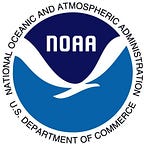One hundred years ago today, President Woodrow Wilson signed into law an act creating the U.S. National Park Service. From Yellowstone and Yosemite to the Grand Canyon and the Everglades, our national parks are magnificent places where we gather with our family, friends and neighbors to experience our nation’s most stunning land- and seascapes and create memories that we’ll never forget.
While many of us are familiar with the national treasures managed by the National Park Service, you might not know another vast system of parks exists. Only, they’re underwater.
Imagine: stunning panoramas of sea creatures and corals of many shapes, sizes and colors. Seascapes filled with shipwrecks and artifacts that serve as time capsules, preserving points in American history and offer us a glimpse into our past.
NOAA’s National Marine Sanctuary System, which encompasses more than 170,000 square miles of marine and Great Lakes waters, contains 13 sanctuaries and two marine national monuments. Our first sanctuary was designated in 1975 off Cape Hatteras in North Carolina, named after the famed sunken Civil War ironclad, U.S.S. Monitor. In the decades following, sanctuary sites began appearing in coastal areas across the United States, from New England to the Florida Keys, the Gulf of Mexico to the Great Lakes, throughout Hawai’i and our Pacific islands, and along the West Coast.
Many of these sanctuaries were formed as the result of grassroots efforts by coastal communities, who wanted to provide stewardship to their ocean backyards and offer educational programming and inspiring ocean experiences to visitors from all over the world. The National Marine Sanctuary System brings together a collection of some of America’s most significant and treasured places. Taken together, the system conserves a network of ocean and Great Lakes environments with extraordinary biodiversity, scenic beauty, cultural heritage and economic opportunity.
In addition to our sanctuaries, NOAA works with local partners at 28 National Estuarine Research Reserves across the nation offering visitors a coastal experience. Many of these sites include visitor centers, hiking trails, bird-watching stations, and fishing piers. But recreation isn’t the singular goal, these sites also serve as science labs for understanding the nursery grounds of our nation’s most economically important fisheries and plant life. They also help scientists understand how climate changes like sea level rise, ocean acidification, and warmer water and land temperatures affects coastal ecosystems.
At NOAA, we work hand in hand with the National Park Service. Several national park sites are adjacent to or overlap with national marine sanctuaries. Many areas managed by the National Park Service are coastal sites and are part of the national marine protected area system. We often collaborate with our national park neighbors to host lectures and exhibits, carry out citizen science events and support Every Kid in a Park efforts — last year we were able to inspire more than 3,200 fourth graders with hands-on experiences of our sanctuaries and research reserves. Our agencies share a common vision that the outdoors is our most important classroom and everyone should have the opportunity to experience our nation’s natural beauty with their own eyes.
Whether you are in a national park, a national marine sanctuary, at an estuarine reserve or any other type of park or public land and waters, America has a diversity of stunning landscapes and seascapes, and there’s much work to be done to sustain these sites for generations to come. Today, NOAA congratulates the National Park Service on its centennial, and we look forward to our continued collaboration to protect America’s most iconic natural and cultural marine resources.
W. Russell Callender is the assistant administrator for NOAA’s National Ocean Service.
